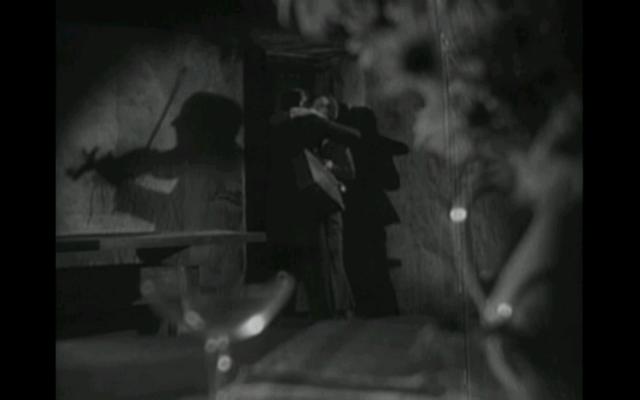|
Genres, Themes, Actors, and Directors:
- Eastern European Films
- Hedy Lamarr Films
- Marital Problems
- Sexual Liberation
Response to Peary’s Review:
As Peary notes, this “once banned picture” — refused importation into the United States until 1940, and publicly denounced by Pope Pius XII — is a “surprisingly impressive work considering that its reputation is based solely on its trouble with censors and [19-year-old Hedy] Lamarr’s nudity.” While its controversial scenes — naked Lamarr swimming and dashing through the forest after her runaway horse; a close-up of Lamarr’s face in “ecstasy” with her handsome new lover — are indeed somewhat “startling” for a film made in the early 1930s, Peary accurately notes that the film remains “an extremely bold, erotic exploration of a woman’s need for sexual fufillment”. Shot much like a silent picture (with limited dialogue), Ecstasy is a visual treat throughout, with effectively dreamy cinematography and many memorable images (see stills below). Unfortunately, the final half hour of the film — in which director Gustav Machaty has Lamarr pay for the sin of “yielding to her sexual desire and seeking out a man for sex” — starts to drag, and an ending montage sequence of industrious workers (which seems to belong to another Soviet-era propaganda movie entirely) is a truly “bizarre” capstone to what’s come before. Despite its disappointing ending, however, Ecstasy remains worthy viewing, not just for its controversy (which makes it an automatic must for all film fanatics) but for its sensuous depiction of young lovers finding short-lived happiness in each others’ arms.
Redeeming Qualities and Moments:
- An effective tale of sensual awakening

- Striking cinematography and creative direction



Must See?
Yes, as a controversial film with cinematic significance.
Categories
Links:
|
One thought on “Ecstasy (1933)”
A must – for its place in cinema history, and for its poetic artistry.
I found it refreshing to see this again. I’d only seen it once, quite a while back. It’s not a silent film, of course, but since the dialogue is so minimal, it has the feel of a silent. (This could be a singular ‘silent’ for people who don’t normally like silents.) The little dialogue that is there is crucial, as it helps clarify what can’t be said with visuals. But most of the visuals speak volumes. And when the actors don’t talk, they still ‘say’ quite a bit.
As for the controversy…those who come to the film expecting something scandalous, or even ‘dirty’, will probably feel let down. Lamarr’s nude scenes are brief and fleeting. Are there as few as three? ‘Naturally’, at the time, brief and fleeting in a mainstream film was still enough to make temperatures and tempers rise. But I especially like the first quick shot of Lamarr swimming. We get the barest glimpse of her breasts, and then the director makes a quick cut to a shot of Lamarr’s horse – as if to say, ‘See? A nude woman is just as natural for the eye as a nude horse? What’s to make a fuss about?’
Lamarr’s character finds out on her wedding night that she should not have gotten married to an older man. The archaic dilemma of ‘waiting til the honeymoon’ comes into full play here and it’s almost sad to think of the thousands of couples who did just that – and the ones who were equally disappointed.
Soon after, tho, Lamarr finds herself almost entering D.H. Lawrence territory when her Eva meets the appropriately named Adam. The couple’s courtship blossoms into a beautifully, erotically charged passion. It’s soft but hot stuff, considering the period. The two make a terrific couple on-screen: she turns stunning and he’s a hunk!
That said, the details of the plot, as well as the performances, do take a back seat to the way the film has been directed and photographed. ‘Ecstasy’ has held up very well over the years.
…At the end, I found myself wondering if the sudden mood shift had something to do with making a compromise of sorts to the political climate of the day. I’m torn between seeing the film again sometime (which I probably will anyway) to determine a through-line…and just not over-thinking the ending. The film works well regardless.